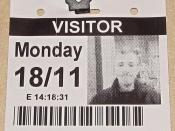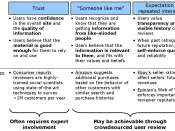To be competitive in today's market, an organization must put total quality methods and models into operation. The application of total quality models will help an organization implement continuous improvement and quality initiatives. As an expert in Continuous Quality Improvement, I discuss the various total quality models available to my organization's management. Later, I will express to management why I believe Continuous Quality Improvement is the best total quality model and why it should be incorporated into the organization's current strategic planning process.
Total Quality Methods and ModelsWhile there are many total quality (TQ) methods and models, the organization will need to select the one that will best fit the needs of the organization. These TQ models all concentrate on the improvement of all functional areas of the organization (University of Phoenix, n.d., ö 3). In addition, the TQ models will help my organization evaluate and analyze its processes and identify root problems and opportunities for improvement.
Some of the possible models are:â¢Continuous Quality Improvement (CQI): A nonstop collaborative effort to identify and remove root causes of problems and constantly look for areas of improvement.
â¢International Organization for Standards (ISO 9000 and 14,000): These commercial standards for quality management are used internationally help document the quality systems elements to be implemented.
â¢Value chain analysis: Analyzes and describes an organization's activities or functions and evaluates its value. The organization must find a way to eliminate functions that do not add value.
â¢Six Sigma: Uses a statistical approach to reduce process output variation and ultimately only tolerating +/-3 sigma from a control chart's centerline in an organization's processes.
â¢Lean manufacturing/service: Concentrates on the eliminating wastes such as waiting, overproduction, excessive movement or transportation, defects, inventory, or processing.
â¢Theory of Constraints (TOC): Focuses on finding the constraint...


